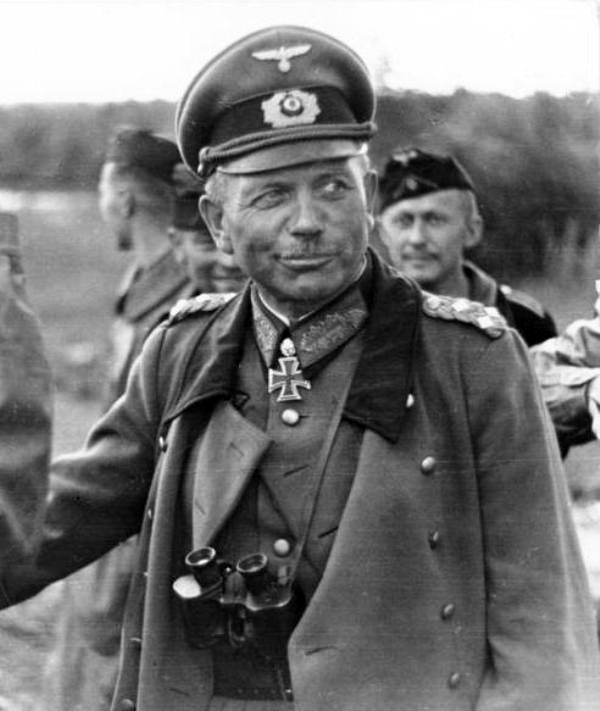Heinz Guderian
Heinz Guderian was an important figure in the development of the Blitzkrieg (literally ‘lightning war’) method of warfare. This tactic of ‘lightening war’ wreaked havoc in Poland, helped force the Allies to withdraw at Dunkirk and aided the German advance into Russia during Operation Barbarossa in 1941.
Born in 1888 in Kulm, Guderian was schooled in Prussia. In 1908 he won a commission in the German Army, where he served as an infantry officer. From 1914-17, Guderian served in Flanders and would have experienced first hand the carnage on the Western Front, and the lack of mobility (or even the stalemate) of both armies. Guderian joined the General Staff and by the end of the war had developed a specialised knowledge of motorised transport.
Guderian started to develop the idea of a highly mobile mechanised army. He wrote many papers on mechanised warfare and the book "Achtung Panzer" in 1937, which was the culmination of 15 years of military study. Guderian’s master plan for a successful panzer attack centred around the use of surprise, armoured divisions, good communication between different mobile units and airpower supporting Panzer units.

In 1931 he became chief of staff to the Inspectorate of Motorized Troops as a Lieutenant-Colonel and in 1935 he was made commander of one of only three Panzer Divisions, the new 2nd Panzer Division. In 1938 he became commander of the XVI Army Corps. His ideas were greatly influential in the creation and deployment of Germany’s Panzer Forces.
Guderian still faced opposition from senior military figures. He was told that an attack on Belgium and France would be hindered by the river systems that flowed through the region. Tanks could not cross rivers, especially those as wide as the River Meuse. Guderian countered the naysayers by incorporating into his strategies the use of specialist engineering units. These units quickly assembled pontoon bridges so that Panzer units could cross rivers easily. A Blitzkrieg attack could also include the use of paratroopers.
The Blitzkrieg method forced the Allies back to Dunkirk and allowed the Germans to make rapid advances into USSR. Guderian led the Second Panzer Army during Operation Barbarossa.
However, the Germans failed to deliver a knockout blow in Russia with the Blitzkrieg method. Hitler sacked Guderian off the back of this failure at the end of 1941. In 1943 he was brought back into the fold as the Inspector General of Armoured Troops. After the July Bomb Plot of 1944, Guderian became Chief of the General Staff.
Hitler rarely gave his military leaders second chances. But he too had experienced the horrors of trench warfare in World War One and must have felt grateful to the man who had re-injected mobility into the Wehrmacht. Guderian remained loyal to Hitler and accepted another dismissal on 28 March 1945, when it became clear that he was incapable of thwarting the Russian invasion of Berlin.
Guderian died in 1954 at the age of 66.
See also: Nazi Germany
MLA Citation/Reference
"Heinz Guderian". HistoryLearning.com. 2026. Web.
